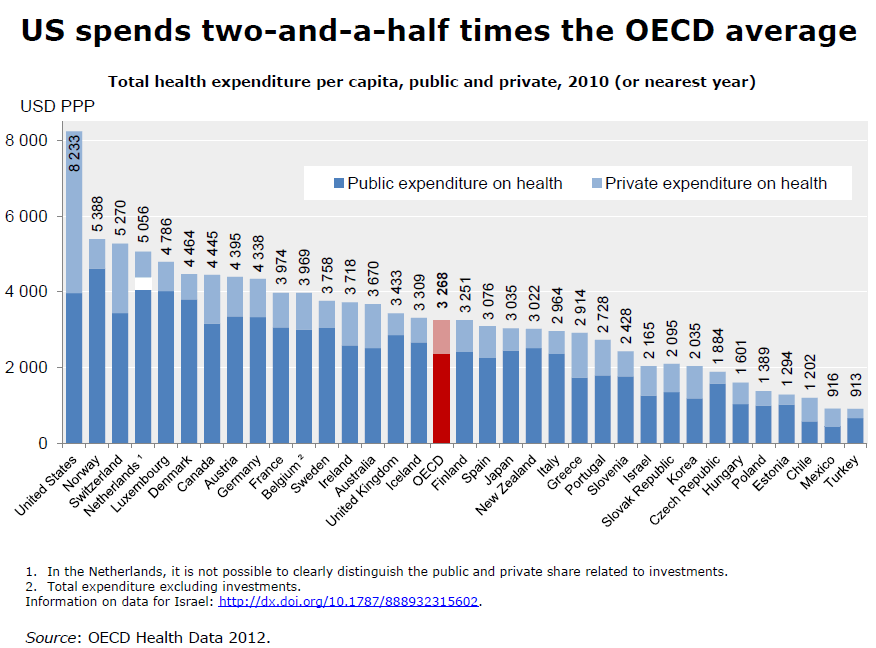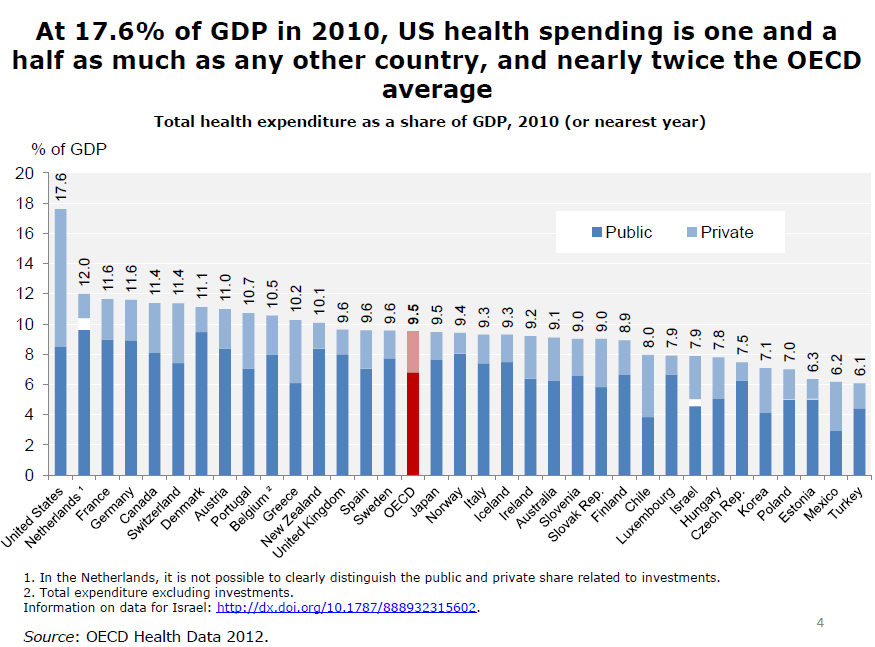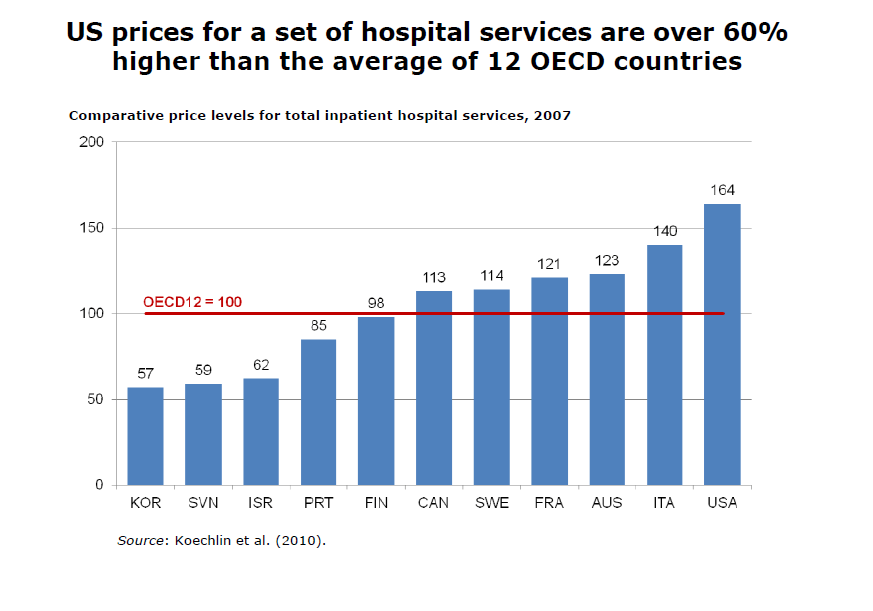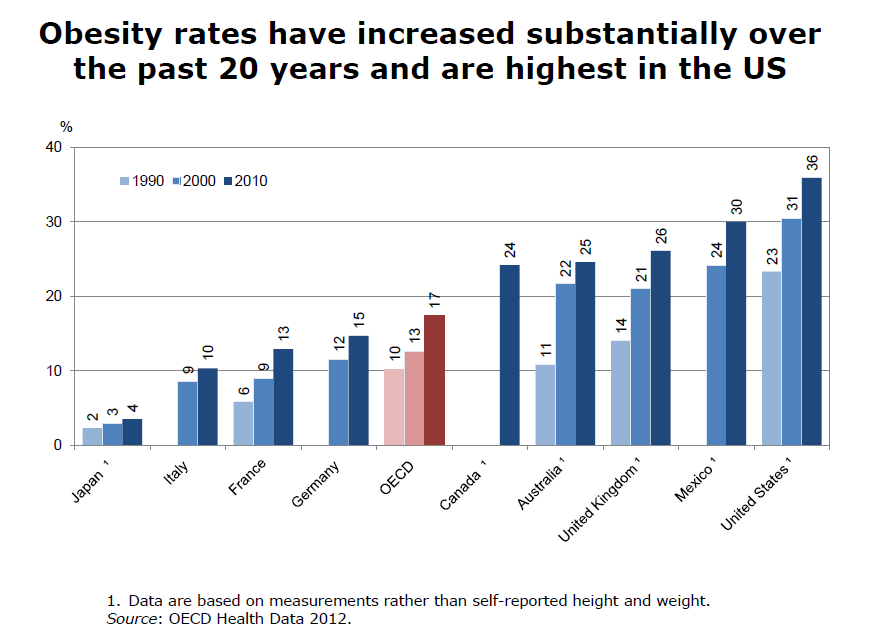America is the only nation in history which miraculously has gone directly from barbarism to decadence without the usual interval of civilization.
– Georges Clemenceau, French journalist, physician and statesman
The U.S. health care system is actually a hodge-podge of many entities, some of which may have conflicting interests, meshed together to operate under the umbrella of a nicely sounding term called the “health care system”. Unlike other developed countries health care is not a human right but a privilege in this country.On the other hand more important things like very cheap fast food, guns including semi-automatic guns, cheap credit, owning a home, drinking large sized-soda and thousands more to list here are considered as rights available to all citizens regardless .
The health care system is run as a business for profit. However unlike other industries the health care industry is very expensive, non-transparent and no such thing as competition exists. All the players in the food-chain of this system have a vested interested in maintaining the status-quo. Hence any real change is unlikely to occur unless the link between money and politics is broken and real free-market competition is allowed to exist. The goal of a patient and the goal of the system are in direct conflict with each other. The patient wants the best care possible for the lowest price while the system wants to make the profits possible. As a results atrocious gouging of patients at every step in the health care system occurs on a daily basis across the land all considered perfectly legal by the state. Hospital systems that operate as non-profits to evade taxes are allowed to charge as much as possible from even the poor or the uninsured. So it is not surprising to see that medical debt is the number one cause for bankruptcy filings in the country.
A 36-page expose of the US healthcare industry by Steven Brill was recently published by the Time magazine under the interesting title Bitter Pill: Why Medical Bills Are Killing Us (Subscription required for access to article). From the article:
1. Routine Care, Unforgettable Bills
When Sean Recchi, a 42-year-old from Lancaster, Ohio, was told last March that he had non-Hodgkin’s lymphoma, his wife Stephanie knew she had to get him to MD Anderson Cancer Center in Houston. Stephanie’s father had been treated there 10 years earlier, and she and her family credited the doctors and nurses at MD Anderson with extending his life by at least eight years.Because Stephanie and her husband had recently started their own small technology business, they were unable to buy comprehensive health insurance. For $469 a month, or about 20% of their income, they had been able to get only a policy that covered just $2,000 per day of any hospital costs. “We don’t take that kind of discount insurance,” said the woman at MD Anderson when Stephanie called to make an appointment for Sean.
Stephanie was then told by a billing clerk that the estimated cost of Sean’s visit — just to be examined for six days so a treatment plan could be devised — would be $48,900, due in advance. Stephanie got her mother to write her a check. “You do anything you can in a situation like that,” she says. The Recchis flew to Houston, leaving Stephanie’s mother to care for their two teenage children.
About a week later, Stephanie had to ask her mother for $35,000 more so Sean could begin the treatment the doctors had decided was urgent. His condition had worsened rapidly since he had arrived in Houston. He was “sweating and shaking with chills and pains,” Stephanie recalls. “He had a large mass in his chest that was … growing. He was panicked.”
Nonetheless, Sean was held for about 90 minutes in a reception area, she says, because the hospital could not confirm that the check had cleared. Sean was allowed to see the doctor only after he advanced MD Anderson $7,500 from his credit card. The hospital says there was nothing unusual about how Sean was kept waiting. According to MD Anderson communications manager Julie Penne, “Asking for advance payment for services is a common, if unfortunate, situation that confronts hospitals all over the United States.”
From another article in Bloomberg:
By the time Astra Augustus left Virtua Memorial Hospital in New Jersey after the last of four surgeries, she’d run up about $255,000 in bills.
At first, Augustus said, she thought she was lucky. Virtua gave her a charity discount, to $30,530. Then she got statements from the doctors who treated her in the hospital, adding $18,000. “I didn’t know who to pay first,” Augustus said.
Virtua sued last month after she fell behind in her $400-a- month installment plan. While the nonprofit hospital had been generous, she said, the debt is still overwhelming for someone with a monthly income of $2,200.
Hospitals’ fast-rising sticker prices are adding to the financial burdens of the 49 million Americans without insurance, more than 20 million of whom won’t be covered under PresidentBarack Obama’s Affordable Care Act.
Now lets take a look at how the U.S. healthcare system compares with other developed countries. From OECD’s health data site:
1. Comparing US Health Expenditure to other OECD countries
Click to enlarge
2.A sample comparison of hospital inpatient price levels
3. US Obesity rates compared to other OECD countries:
Source: U.S. health care system from an international perspective, OECD Health Data 2012
Related:
From Why an MRI costs $1,080 in America and $280 in France in The Washington Post, Mar 15, 2013:
“In my view, health is a business in the United States in quite a different way than it is elsewhere,” says Tom Sackville, who served in Margaret Thatcher’s government and now directs the IFHP. “It’s very much something people make money out of. There isn’t too much embarrassment about that compared to Europe and elsewhere.”
The result is that, unlike in other countries, sellers of health-care services in America have considerable power to set prices, and so they set them quite high. Two of the five most profitable industries in the United States — the pharmaceuticals industry and the medical device industry — sell health care. With margins of almost 20 percent, they beat out even the financial sector for sheer profitability.





This posting seems to be written by someone who would like the world to conform to his views rather than endure the world’s injustices and irony! This is the type of person who is never happy w/ life!
Thanks for your comment.
This post is about U.S. healthcare system compared to other countries. Where is it mentioned that “never happy w/ life!”?
Next time can you read the article clearly and post a comment related to it?